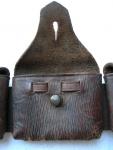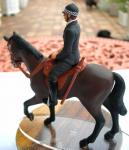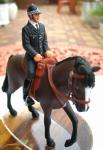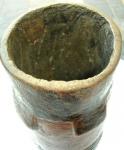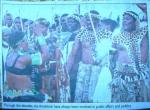-
Posts
13,225 -
Joined
-
Last visited
-
Days Won
22
Content Type
Profiles
Forums
Blogs
Gallery
Events
Store
Everything posted by Mervyn Mitton
-

Queen introduces new military medal
Mervyn Mitton replied to Bob's topic in Great Britain: Orders, Gallantry, Campaign Medals
Certainly based on the Canadian version - and I'm sure will be worn with pride. I know Canada , Australia and Sth. Africa have all issued family medals - but, apart from the 'Death Plaques' of WW1 is this the first time the UK has issued such a medal ? -

BOER WAR LEE METFORD BANDOLIER
Mervyn Mitton replied to Mervyn Mitton's topic in Firearms & Ordnance
-

BOER WAR LEE METFORD BANDOLIER
Mervyn Mitton replied to Mervyn Mitton's topic in Firearms & Ordnance
-

BOER WAR LEE METFORD BANDOLIER
Mervyn Mitton replied to Mervyn Mitton's topic in Firearms & Ordnance
-
Sorry the previous post didn't open - in the middle of downloading, GMIC went 'off' line for a few minutes. Needed Rick to put things right !!! This is the Infantry bandolier for the British Lee Metford rifle - Boer War period. (1899-1902). The ammo. was .303 and each compartment held five rounds - with the points projection through holes in the bottom. There were 8 compartments - i.e. 40 rounds. The bandolier could be worn crosswise round one shoulder, or, around the waist. There were other patterns of cross belts - the cavalry wore a quite different type - I don't have one now and perhaps someone could show them ? The overall length was 38 inches (97cm)
-
Where to post this lovely gilt badge has been a problem - we don't really have a sub-heading to cover CUSTOMS. One of the most important parts of any Government , is the collection of money and before income tax was introduced in the 18th. Century, the collection of revenue from imports into Britain was most important. The Customs Service has a far longer history than the Police and in many cases, their powers were - and still are - far greater than other authorities. Money speaks !! With the medieval Kings one of their ways to honour and support their favourites, was to give the right to collect taxes on certain items. Precious metals, cloth - even salt - all could be given to reward someone. When Police still consisted of a local village constable, there were organised bodies of men to prevent smuggling - known as the 'Revenue Men' - they often worked under the direction of the local magistrates. They had their own ships - Revenue Cutters - and many battles were fought with smugglers - particularly during the Napoleonic Wars, when goods were in short supply. Today, their Headquarters are in a lovely Georgian Building , in Lower Thames Street - near the Tower of London. I am not sure if this is a standard badge - or, with the gilding, for officers ? I would be interested to hear more about the Service - and also, about Custom Services in other Countries ??
-
This shows the long stave - or, truncheon which the mounted branch carried for years. Always known as a ' sabre' it was approx. 3' 6" long(105cm) and was made from Ash - bound with a special twine. There was a leather guard for the knuckles. I believe that they have been dis-continued and they only use the 17'' truncheon - but, this has also gone - so, are they only armed now with that metal expanding 'thing'?
-
Fine model of a Metropolitan Police Mounted Branch Officer. The mounted branch dates from the 1805 period when they were know as the Bow Street Mounted Patrol - it was not until the late 1830's that they became part of the Met.. Whilst they do an 8 hour shift - only half of that is on patrol - the rest is looking after the horse. They are great favourites with the public - and when I was younger you could give them something to eat, if the officer gave permission. This is totally forbidden today - anti-police people were trying to feed them with razor blades and nails concealed ! A sad World...
-

Zulu items
Mervyn Mitton replied to helen's topic in Great Britain: Militaria: Badges, Uniforms & Equipment
No, the one has little grips, one has a handles and the bottom one, they have carved a section out to provide grips. These are very collectable - the American tourists , particularly, like to take them home - they probably look good with a dried flower arrangement. -

Zulu items
Mervyn Mitton replied to helen's topic in Great Britain: Militaria: Badges, Uniforms & Equipment
I meant to add this one with the other two examples. A particularly well carved one, I will add it now to show different styles. -
Thanks Thomas. I think I am now in agreement that it is an early Italian Carcano. That must have been the design with the up-turned quillion.
-

Zulu items
Mervyn Mitton replied to helen's topic in Great Britain: Militaria: Badges, Uniforms & Equipment
-

Zulu items
Mervyn Mitton replied to helen's topic in Great Britain: Militaria: Badges, Uniforms & Equipment
-

Zulu items
Mervyn Mitton replied to helen's topic in Great Britain: Militaria: Badges, Uniforms & Equipment
-

Zulu items
Mervyn Mitton replied to helen's topic in Great Britain: Militaria: Badges, Uniforms & Equipment
Continuing our theme of historical Zulu pieces, I am posting pictures of two ITHUNGAS or, milk pails. These are hand carved and the insides are cut out by hand - a long job from a solid block of wood. They are highly collected today - being so decorative, and every one is different. You will see the amazumpas, which we mentioned earlier. They could be used for milking cows or, goats and the milker - usually a young girl, would sit with the Ithunga between her legs - in the kraal, there would be a larger version for all the milk to be kept in. They stand about 15 inches high (38cm) and are approx. 100 years old. -
From what has been said , it appears that the tradition of appointing 'civilians' to senior military and police ranks, is of long standing. Certainly, the last two Governments - the Nationalists and followed by the ANC - have made a habit of appointing people and granting them a rank commensurate with what they may have achieved at that age !! The perfect example is our present Commissioner of Police for the S.A.N.P.S. - he was appointed as Commissioner from a civilian - and with no police experience - and is presently suspended awaiting trial of attempted murder, fraud and a whole host of other charges. They can't appoint a re-placement until the trial is over...
-
Take me back - frightened the 'daylights ' out of me !! How many pages are in the full volume ? It was the bane of our lives - every week they would give us the amendments - it took hours to cut them out and stick them in - worst of all, we had to memorise at least half of the Acts and be able to 'spout' them . Necessary if you were making an arrest - the decision you made in 30 seconds, could be examined for months by lawyers, who then faced you off in court. Every policeman has always had the same memorising problem. I'm hoping that other members will post their uniforms - it can't just be Robin, myself and Mike - hiding behind his large glass !!! Leigh, at least, has to show us his - he's the Host... Thanks. Mervyn
-

Zulu items
Mervyn Mitton replied to helen's topic in Great Britain: Militaria: Badges, Uniforms & Equipment
By great co-incidence this photo appeared in the Durban Sunday Tribune, this morning. The Amakhosi are all traditional chiefs and their dress - shown here - exactly shows what we were talking about. The Induna in the middle is actually wearing a Nene made from Wild Cat tails. Note how the leopard skins are slung from the shoulder. This is not a common sight today and we are lucky it has come at the this time.


